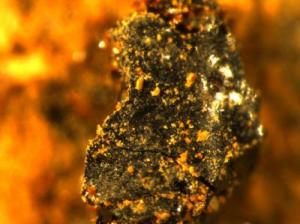|

|
|
Chemical analyses have uncovered secrets of an ancient amphora.
[Credit: Gimeno et al.]
|
The latest study, published recently in the journal Analytical Letters, focuses on the resinous material that sealed the vessel. There are remains of a circular rope-effect decoration around the mouth of the amphora, and on which some fingerprints of the craftsman who moulded it can still be seen. It would probably have been sealed with a lid of cork or wood, of which nothing remains, possibly including a ceramic operculum, such as those found nearby. "We have studied the substance that was used to seal the container using three different techniques, and we compared it with pine resin from today", José Vicente Gimeno, one of the authors of the study and a senior professor at the UV, tells SINC. The results confirm that the small sample analysed, which is 2,000 years old, contains therpenic organic compounds (primaric, isoprimaric and dehydroabietic acids), allowing this to be classified as resin from a tree from the Pinus genus. The researchers have identified some substances that indicate the age of resins, such as such as 7-oxo-DHA acid, although this kind of compound was not abundant in the sample due to the amphora's good state of preservation. In addition, Gimeno says that the archaeological resin of the amphora found was hard and blackish with yellow spots, unlike present-day resin, which is more malleable and orangey in colour, similar to the fresh sap of the tree.
Italic amphora in the Straits of Gibraltar "The jar was found in an area that must have been the amphora store of a house from the period between 50 BCE and 10 CE", Carmen Aranegui, coordinator of the excavations at Lixus and also a senior professor at the UV, tells SINC. The archaeologist, who has been working at the site for the past 15 years with the Institut National des Sciences de l'Archéologie et du Patrimoine of Rabat, says the amphora is Italic, probably from the region of Campania. It is currently being housed in the archaeological warehouse at Larache. These jars were used as containers for wine or salted products, but after serving this purpose they could be re-used as watertight storage containers. The amphora found contains metallic fragments, and the scientists have analysed these too. According to the experts, it is likely that this vessel was undergoing a second use, protecting pieces of iron from corrosion, so that they could later be used in the iron-forging process in a local foundry at the time. Not far from this amphora, another has been found at Lixus bearing the mark in Latin 'A.MISE', which is the name of the person who made the jar, and has also been found on another similar one found in Cadiz, Spain. "This was a period when there was great contact between these two cities on either side of the Straits of Gibraltar", points out Aranegui.
|